 Working with clients who sell technology products and consumer electronics can be truly rewarding, as these merchants operate on the very vanguard of ecommerce. Since this is such a competitive market that’s constantly evolving, these clients need themes that showcase their products in the best light, as well as guidance on how to maximize online visibility.
Working with clients who sell technology products and consumer electronics can be truly rewarding, as these merchants operate on the very vanguard of ecommerce. Since this is such a competitive market that’s constantly evolving, these clients need themes that showcase their products in the best light, as well as guidance on how to maximize online visibility.
Just like its products, the technology market is highly innovative with disruptive funding methods, product orientation, and distribution channels. In order for your clients to stay competitive in this area, they’ll need the support of developers and designers who can provide the most user-friendly experience.
Last month, we delved into how to work with and support apparel clients in the ecommerce realm. In this article, we’ll look at some emerging strategies for technology stores to better understand how this industry is changing, and how developers can make the most informed decisions when specializing in this area.
We’ll also provide a sample product CSV file that you can use to quickly set up a technology-themed development store when pitching to clients, as well as some recommended apps and themes.
Technology trends to watch
When you’re developing stores for clients that are selling technology products, it’s important to consider how changes within the industry can affect the design of a store and how the site can integrate with other platforms. By staying informed of these trends, you can implement strategies that are specific to consumer electronics, and provide a specialized service that is in tune with today’s customers.
1. How crowdfunding is changing web design
Kickstarter is a very low cost method for budding start-ups to generate interest in their innovative electronic products. The crowdfunding service is the perfect platform to showcase new tech, and provides opportunities to speak directly to potential customers via video and text, while attractive offers allow new brands to stand out.
Since crowdfunding campaigns generally focus on one specific product — which often links back to a landing page or dedicated website — there’s a new movement towards websites that highlight a single product.
Designers who concentrate on this area by developing Kickstarter-friendly themes can leverage this marketing approach. Some templates from the Shopify Theme Store, such as Startup and Launch, are optimized specifically for single-product stores, and often have the functionality to present the goals and progress of your client’s crowd-funding campaigns.

Often, you’ll find new electronic products advertised on Kickstarter, and it has become the go-to platform for entrepreneurs looking to fund innovative tech. Visitors to Kickstarter are commonly digital natives with a keen interest in cutting-edge gadgets, which makes it a perfect launchpad for young businesses with original ideas. While the platform’s content is generally populated by companies themselves, it’s important for developers to understand the relationship between Kickstarter, social media, and dedicated websites.
Retailer Nomad Goods debuted on Kickstarter in the summer of 2014, and focused on providing super-slim and portable USB cable chargers. The team started a campaign to gauge interest in the project, and launched their first product on Kickstarter with a funding goal of $50,000.
The product quickly gained attention from investors, and the team managed to triple their target funding goal, ultimately raising $161,897. Nomad highlights the social advantages of using Kickstarter, and points to the powerful effect it had on their growth.
“We started as a Kickstarter company, which gave us the social foundation to grow and market to a wide range of customers,” they explain in an interview with Shopify.
When a crowdfunding campaign finishes, there must be a strategy in place to drive fans back to a dedicated website. Shopify Partners can play an important role here by crafting a suitable marketing experience that targets previous funders, and re-engages them with the future of the brand.
You might also like: Partner Spotlight: Fifty & Fifty Designs Site for Kickstarter Product.
2. Using video to showcase products
While consumer electronics may not be as immediately eye-catching as other industries, like apparel, there’s still a strong visual element to marketing them.
Video, in particular, can demonstrate the various qualities of a product, including how a product is packaged, how it’s set up, and how the product compares to other similar products. Full width videos are becoming especially popular on themes hosted by technology brands, and embeddable videos on product pages can drive conversions for your clients.
According to research done by Statista, the consumer electronics market is expected to account for just under 20 percent of total ecommerce sales in the U.S. by 2020. This is a significant market share, and using a theme with native video embedding options can help your clients showcase their products and make the most of this lucrative market. Since electronics can be complex in terms of set-up and feature comparison, it’s no surprise that consumers appear to be making key decisions based on video.
Research by Pixibility has shown that on YouTube, technology videos accounted for 18.9 billion total views, and 483 million views per month back in 2014. If there’s such a high demand for consumer electronic videos on Youtube, savvy developers can leverage this to their benefit by including embeddable videos on product pages.
Hosting videos on product pages can increase your client's conversion rate by an of average 37 percent, according to Goodvidio findings. This means that when your client’s product videos are directly embedded on product pages, there’s a greater chance that customers stay on the website and complete their purchase, rather than visiting YouTube in search of relevant video.
You might also like: How to Use Video in Ecommerce Web Design to Boost Conversions.
3. Multi-channel connections
Like all ecommerce industries, the technology sector is seeing huge growth in revenue outside of the traditional single website model. A report by IBM discovered that in the U.S. and the UK, consumer electronics is the product category most often chosen by multi-channel shoppers. Businesses that are selling across different channels will have a much higher chance of being successful, and as developers, you have a responsibility to your clients to ensure you’re forming these connections when you’re designing their stores.
A customer's purchase journey is no longer a linear path, with social media becoming part of everyday life, and boundaries between platforms becoming increasingly blurred. Websites that have seamless integrations with Instagram, Snapchat, and Facebook can drive engagement with appealing content and increase the opportunities for sales.
As multichannel selling becomes the standard, clients will expect their custom themes to have smooth integrations with all the major social channels. Shopify Partners can build these integrations in a range of different methods, whether that’s Instagram galleries on homepages or the ability to sell directly through Facebook Messenger.
It’s even possible to create your own sales channel using the Sales Channel SDK and to connect with social networks that have untapped potential. The Sales Channel SDK gives developers the tools needed to add rich commerce experiences into any mobile app, marketplace, or website. Once you’ve created an app that connects Shopify to a third-party platform, merchants can select specific products to sync with this new channel.
You might also like: Shopify Opens its Platform to Developers With New Sales Channel SDK.
Recommended apps for technology clients
Having the right functionality for your client’s stores can be crucial to achieving their goals. Using apps can help deliver this functionality, avoiding the cost of developing a bespoke solution from scratch, and helps your clients maximize their online visibility.
With this in mind, here are some apps that will give your clients the greatest advantage when selling consumer electronics.
1. SEO Manager
 Given the vast amount of electronic retailers online, it’s crucial to stand out amongst the crowd, and having an SEO strategy will help merchants increase their visibility on search engines. SEO Manager is the go-to app for many Shopify merchants and gives your clients control over how each page of their store is interpreted by Google. This app allows basic editing of metadata as well as more advanced functionality, such as blocking Google from indexing specific pages and 404 error management.
Given the vast amount of electronic retailers online, it’s crucial to stand out amongst the crowd, and having an SEO strategy will help merchants increase their visibility on search engines. SEO Manager is the go-to app for many Shopify merchants and gives your clients control over how each page of their store is interpreted by Google. This app allows basic editing of metadata as well as more advanced functionality, such as blocking Google from indexing specific pages and 404 error management.
2. JSON-LD for SEO
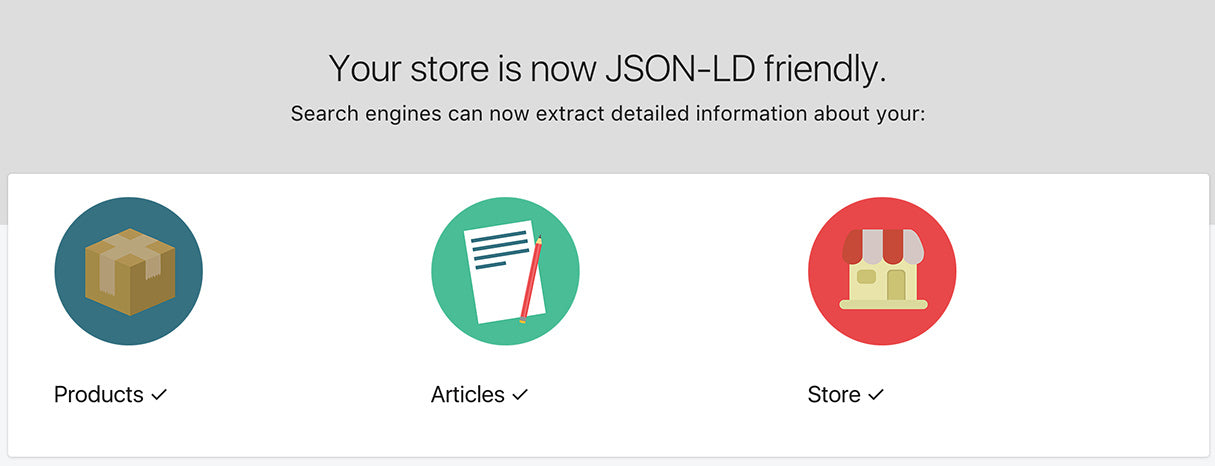 JSON-LD is structured data that can be added to a web page to give search engines like Google specific information about a page. This allows Google to index pages more efficiently, and empowers your clients to indicate exactly what info would appear for their search results. The JSON-LD for SEO app enables merchants to present their product details directly in the search results, so that customers can easily see what kinds of features an electronic product might have.
JSON-LD is structured data that can be added to a web page to give search engines like Google specific information about a page. This allows Google to index pages more efficiently, and empowers your clients to indicate exactly what info would appear for their search results. The JSON-LD for SEO app enables merchants to present their product details directly in the search results, so that customers can easily see what kinds of features an electronic product might have.
3. Lucky Orange
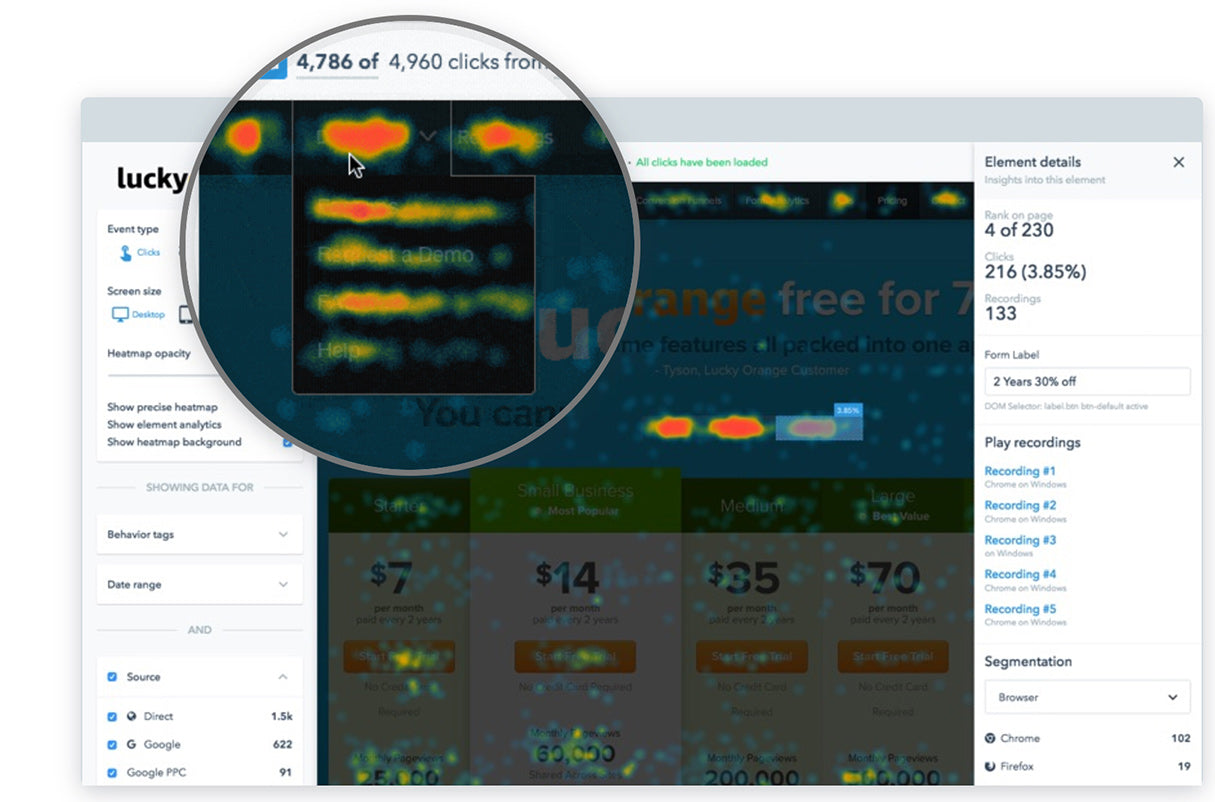
Having a well crafted and intuitively designed store will lead to higher conversions, but how can you see exactly where design can be improved for real-life visitors? Lucky Orange records how visitors interact with your web pages to give your clients insight into customer behaviour. Any areas that are causing customers to abandon the site, or cause difficulties, can be easily identified by watching videos of visitors behaviour.
4. Yotpo
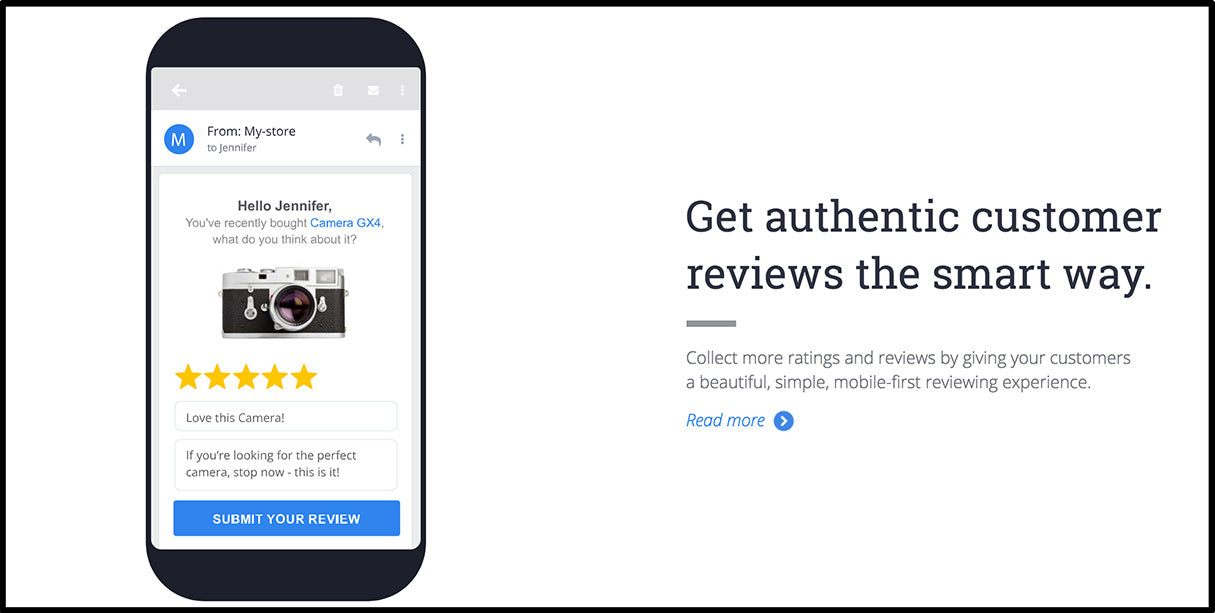 Reviews are incredibly important when customers are making a decision to purchase an electronic product, so it’s critical to be able to easily collect and present testimonials from customers. Yotpo allows you to curate any user-generated content, including pictures and feedback, and integrates with your client’s social media channels to drive sales to stores.
Reviews are incredibly important when customers are making a decision to purchase an electronic product, so it’s critical to be able to easily collect and present testimonials from customers. Yotpo allows you to curate any user-generated content, including pictures and feedback, and integrates with your client’s social media channels to drive sales to stores.
5. Kit

If your clients are designing new electronic products and hoping to crowdfund their creations, chances are that they’re going to be tight for time, and marketing can easily become sacrificed in favour of R&D. Kit can be a lifesaver in these circumstances, by automating social media advertising and email marketing. Quickly assign what marketing processes your client would like to carry out everyday, and Kit will take care of it. Kit has been described as a virtual marketing employee and it can free up a significant amount of time.
Recommended themes for technology clients
As we’ve already mentioned, some themes are built especially for crowdfunding, giving clients with one flagship product an advantage. But other types of electronic retailers might have different priorities, such as visual storytelling or smart filtering. Here are a few themes to consider for your different technology clients.
1. Jumpstart
 Jumpstart is the perfect theme to present your client’s Kickstarter venture, both before and after the project has been funded. Designed specifically for crowdfunding campaigns, this theme boosts an 'As seen on' section, which is perfect for highlighting your client’s media coverage. The focus on a small number of products and large imagery means your client can showcase their consumer electronics.
Jumpstart is the perfect theme to present your client’s Kickstarter venture, both before and after the project has been funded. Designed specifically for crowdfunding campaigns, this theme boosts an 'As seen on' section, which is perfect for highlighting your client’s media coverage. The focus on a small number of products and large imagery means your client can showcase their consumer electronics.
2. Empire
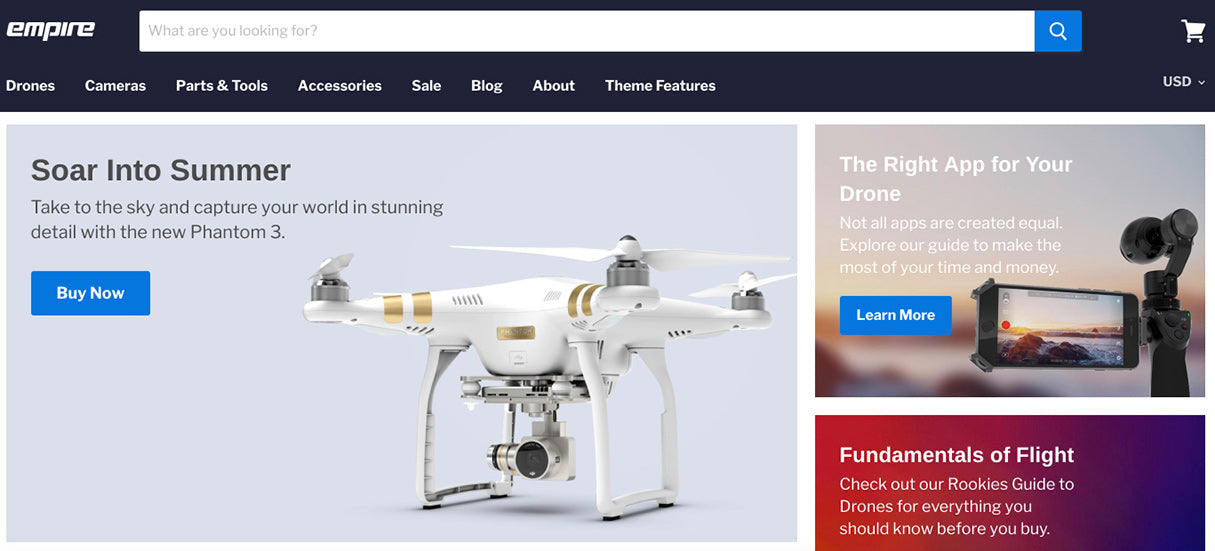 Empire is built for large inventories, and the product filtering feature allows customers to navigate easily to find the exact brand or model they’re looking for. With add to cart buttons on collection and home pages, your clients can speed up the checkout process, especially helpful when you’re dealing with a large catalog of products.
Empire is built for large inventories, and the product filtering feature allows customers to navigate easily to find the exact brand or model they’re looking for. With add to cart buttons on collection and home pages, your clients can speed up the checkout process, especially helpful when you’re dealing with a large catalog of products.
3. Handy
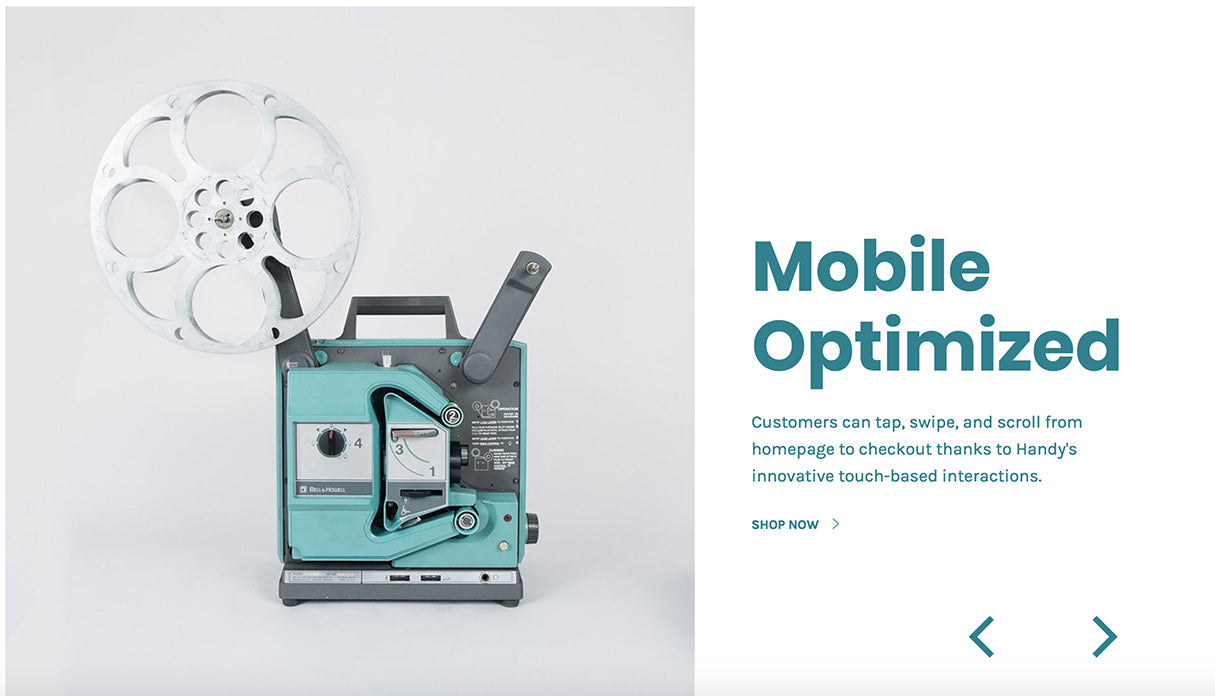 For clients who are looking for a truly mobile first experience, Handy is a perfect theme to showcase consumer electronics on a smaller screen. A multi-tiered menu with a focus on search is designed to give customers the most user-friendly experience, and ensures products are discoverable.
For clients who are looking for a truly mobile first experience, Handy is a perfect theme to showcase consumer electronics on a smaller screen. A multi-tiered menu with a focus on search is designed to give customers the most user-friendly experience, and ensures products are discoverable.
4. Trademark
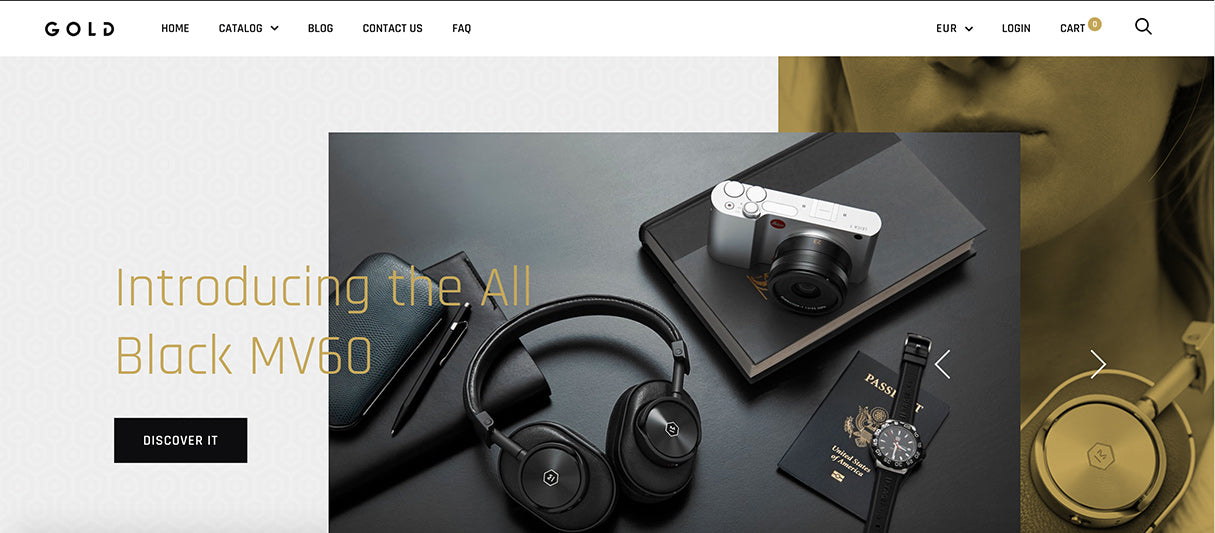 This image-rich theme is designed for brand storytelling, and ideal for stores that are looking to leverage video to drive sales. A multi-layered slideshow with video lives on the homepage, and with native video functionality on product pages, Trademark will bring your client’s technology products to life.
This image-rich theme is designed for brand storytelling, and ideal for stores that are looking to leverage video to drive sales. A multi-layered slideshow with video lives on the homepage, and with native video functionality on product pages, Trademark will bring your client’s technology products to life.
Pitching to technology and consumer electronic clients
Developers who design technology-specific stores can provide the best service for clients by keeping informed of industry developments and market trends. By combining these industry insights, suggested apps, and suitable themes into a development store, you can pitch your finest work to clients.
Read more
What strategies do you use with technology and consumer electronic retailers? Tell us in the comments section below!




